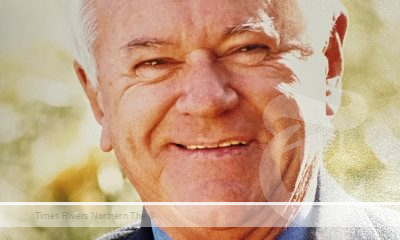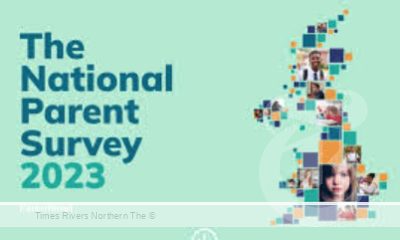FUNDING ANNOUNCEMENT TO END DOMESTIC VIOLENCE WELCOMED, BUT MORE HELP IS NEEDED
By Sarah Waters
THE Federal Government’s 2023 budget announcement to invest $589.3 million to end violence against women and children ‘within a generation’ is welcomed news for a Northern Rivers frontline agency dealing with domestic violence on a regular basis.
Salvation Army public relations secretary for Queensland & Northern Rivers Simon Gregory said the additional funds would bolster the work domestic violence support services are offering.
Advertisements

“It puts more power in the hands of those, who are being abused, to escape their situation,” Mr Gregory said.
“One of the biggest drivers for women deciding to stay in a violent relationship is the lack of suitable housing options if they try and leave – the recent shortage of affordable housing has not helped this situation.
“Over two-thirds of all women entering homelessness services are presenting with a history of domestic violence,” he said.
Mr Gregory said the issue of domestic violence was a whole-of-community problem that all levels of government and the wider community needed to take responsibility for.
“Preventative measures, like the way we teach children about respect of women, anger management, how we support people likely to abuse drugs or alcohol etc are important, just as is having easy pathways and options for women to escape violent households, or better still, how to safely remove a perpetrator so the family can stay in the home.
“I think we have come a long way in the past decade, particularly in the areas of awareness, reporting rates and not accepting violence as an option, ever.
 “But there is still a long way to go to end domestic violence – these funds will help.”
“But there is still a long way to go to end domestic violence – these funds will help.”
Meanwhile, general manager of policy and advocacy at The Salvation Army Jennifer Kirkaldy said the federal government’s plan to increase the JobSeeker and Youth Allowance payments to $40 a fortnight, which equates to $2.86 a day, was inadequate for a person to live with dignity.
“This amount is not enough to afford a return trip on public transport in almost any capital city in Australia and it is not enough to purchase a dozen eggs, two litres of fresh milk or a packet of paracetamol,” Ms Kirkaldy said.
“The decision to leave JobSeeker and Youth Allowance at inadequate levels means hundreds of thousands of Australians will continue to make the heart-breaking decisions the Salvation Army sees daily, such as victims-survivors of family violence staying in danger or escaping only to face homelessness.
“The Salvation Army has had to step in over 30 million times to help people who are struggling.
“The need for a substantial increase is very real and is felt in our community every day.”
The government will invest $159 million over two years, from 2023-24, to extend the National Partnership on Family, Domestic and Sexual Violence Responses with state and territory governments, and to continue to address service gaps to support frontline service delivery.
It has set aside $18.6 million to prevent and address sexual violence, aimed to strengthen sexual assault, and consent laws and prevent further harm to victims during the justice process.
There is also close to $200 million in funding for Australia’s first dedicated Aboriginal and Torres Strait Islander Action Plan.
The action plan is being developed in partnership with the Aboriginal and Torres Strait Islander Advisory Council on family, domestic and sexual violence to ensure the voices of First Nations people are at the centre of this work.
While a further $10 million in funding will support visa holders experiencing domestic and family violence through the Migration Regulations 1994.
The government will provide $134.1 million in ongoing funding for the Office of the eSafety Commissioner to continue to support Australians online through enhanced educational, outreach and investigatory activities.
The Government invested $1.7 billion in women’s safety through its October Budget last year.
It plans to build 4000 social housing properties through the Housing Australia Future Fund to provide long term housing for victim-survivors of domestic and family violence, and older women on low incomes who are at risk of homelessness.
FACTBOX:
According to Domestic Violence NSW (DVNSW) there are about 2500 reports of domestic violence to the police every month in NSW, but this likely represents only 40 per cent of actual incidents due to under reporting.
One in four Australian women experience physical or sexual violence by a current or former intimate partner since age 15.
Recent data shows one woman is killed every 14 days in Australia by a current or former partner.
International studies have also highlighted that after extreme weather events domestic violence increases.
The Northern Rivers region was no exception to this, with the Momentum Collective citing an increase in DV clients, who faced challenges to find safe and secure housing after the floods with some being temporarily relocated to Brisbane.





 Tweed Shire News2 years ago
Tweed Shire News2 years ago
 Motoring News1 year ago
Motoring News1 year ago
 COVID-19 Northern Rivers News3 years ago
COVID-19 Northern Rivers News3 years ago
 COVID-19 Northern Rivers News3 years ago
COVID-19 Northern Rivers News3 years ago
 Northern Rivers Local News3 years ago
Northern Rivers Local News3 years ago
 Health News3 years ago
Health News3 years ago
 COVID-19 Northern Rivers News3 years ago
COVID-19 Northern Rivers News3 years ago
 NSW Breaking News3 years ago
NSW Breaking News3 years ago








 “But there is still a long way to go to end domestic violence – these funds will help.”
“But there is still a long way to go to end domestic violence – these funds will help.”




























